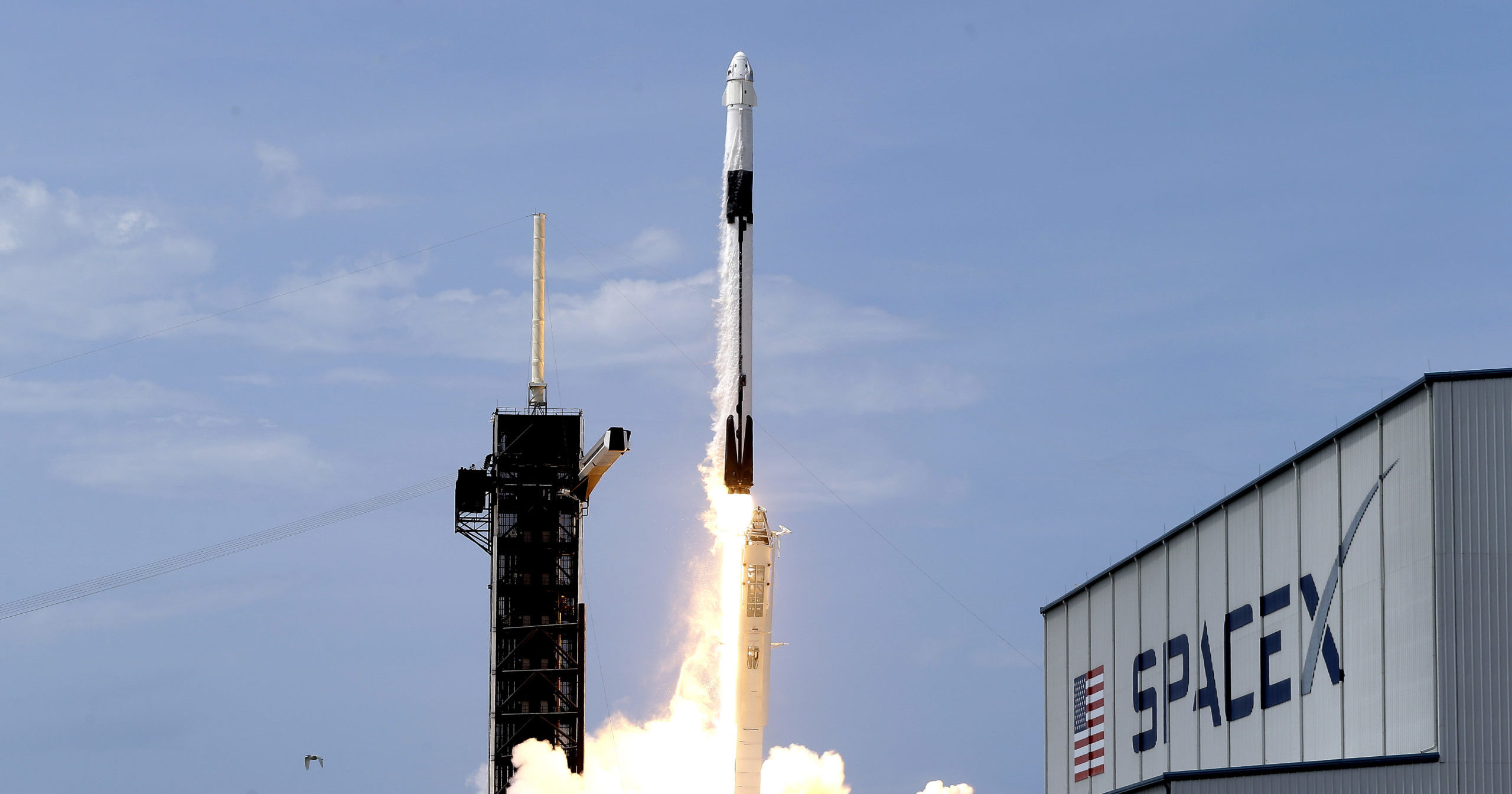
Trump Admin, World Take Great Strides in Space in 2020
Astronauts blasted into orbit from the U.S. for the first time in nearly a decade, three countries sent spacecraft hurtling toward Mars, and robotic explorers collected rocks from the moon and gravel from an asteroid for return to Earth.
Space exploration provided moments of glory in an otherwise difficult year.
It is set to do the same in 2021, with February’s landings on Mars and next fall’s planned launch of the Hubble Space Telescope’s successor — the James Webb Space Telescope.
“2021 promises to be as much of a space exploration bright spot, perhaps even more,” according to Scott Hubbard, NASA’s former “Mars Czar” now teaching at Stanford University.
Although the coronavirus pandemic and resulting restrictions complicated space operations around the globe in 2020, most high-priority missions remained on track, led by the U.S., China and the United Arab Emirates in a race to Mars in July.
The UAE’s first interplanetary spacecraft, an orbiter, will analyze the Martian atmosphere.
NASA’s Perseverance rover is set to land Feb. 18 at an ancient river delta and lakebed where microscopic life may have once flourished. The rover will drill into the dry crust, collecting samples for eventual return to Earth.
China’s Tianwen-1 also will hunt for signs of bygone life.
The European and Russian space agencies skipped the 2020 Mars launch window, their Mars rover grounded until 2022 because of technical issues and coronavirus restrictions.
China also set its sights on the moon in 2020, landing and then launching off the lunar surface in December with the first moon rocks collected for return to Earth since the 1970s.
Japan brought back pieces of an asteroid — its second batch in a decade. More asteroid samples are on the way: NASA’s Osiris-Rex spacecraft vacuumed up gravel from an asteroid in October for return in 2023.
Elon Musk’s SpaceX, meanwhile, was buzzing in 2020.
In May, it became the first private company to put people into orbit, an achievement previously claimed by just three global superpowers. The two test pilots were the first NASA astronauts to fly a new kind of spaceship in almost 40 years and the first to blast off from Florida since the shuttle program ended in 2011.
In November, four more astronauts rode a SpaceX Dragon capsule to the International Space Station. Three weeks later, SpaceX launched its biggest cargo shipment yet to the space station for NASA.
Until the SpaceX flights, Russia’s three-person Soyuz capsules were the only way to get astronauts to the space station once NASA’s shuttles shut down.
NASA’s other hired crew transporter, Boeing, is scrambling to get its Starliner capsule back in action after a software-spoiled test flight in December 2019.
Another test — again with no one on board — is scheduled for spring. If the repairs work and the capsule finally reaches the space station, the first Starliner astronauts could be flying by summer.
Musk capped the year with a stratospheric test flight of Starship, the rocket ship he’s building to carry people to the moon and Mars. The Dec. 9 demo went better than anyone imagined until a fiery explosion at touchdown.
Late next year, SpaceX expects to launch the first privately financed Dragon flight in a deal arranged by Houston-based Axiom Space.
Axiom’s Michael Lopez-Alegria, an ex-NASA astronaut and former president of the Commercial Spaceflight Federation, will accompany Israeli businessman Eytan Stibbe and two other paying customers to the space station.
Stibbe, a former fighter pilot, was a close friend of Israel’s first astronaut, Ilan Ramon, who died aboard space shuttle Columbia in 2003.
“This is the true beginning of private spaceflight and will get the ball rolling toward multiple private missions to orbit per year,” Lopez-Alegria said in an email. “I’ve been preaching for almost a decade that commercial human spaceflight is the next giant leap.”
Two other space travel companies — Jeff Bezos’ Blue Origin and Richard Branson’s Virgin Galactic — are still conducting test flights and have yet to set firm dates for launching customers on short flights to the edge of space and back.
NASA is still targeting a November debut of its new moon rocket, the Space Launch System, with an Orion capsule that will launch without a crew.
The Trump administration had set a 2024 deadline for the first moon landing by astronauts since NASA’s Apollo program a half-century ago. Just this month, NASA introduced the 18 astronauts who will train for the Artemis moon program.
It remains to be seen how presumptive president-elect Joe Biden might alter the lunar landing program.
“Whatever else can be said about the four years of the Trump administration, they have been positive for the U.S. civilian space program,” John Logsdon, professor emeritus at George Washington University’s Space Policy Institute, said.
“No prior major programs were cancelled, the human exploration program was given clear direction, and funding for existing programs was increased.”
The Western Journal has reviewed this Associated Press story and may have altered it prior to publication to ensure that it meets our editorial standards.
Truth and Accuracy
We are committed to truth and accuracy in all of our journalism. Read our editorial standards.
Advertise with The Western Journal and reach millions of highly engaged readers, while supporting our work. Advertise Today.












